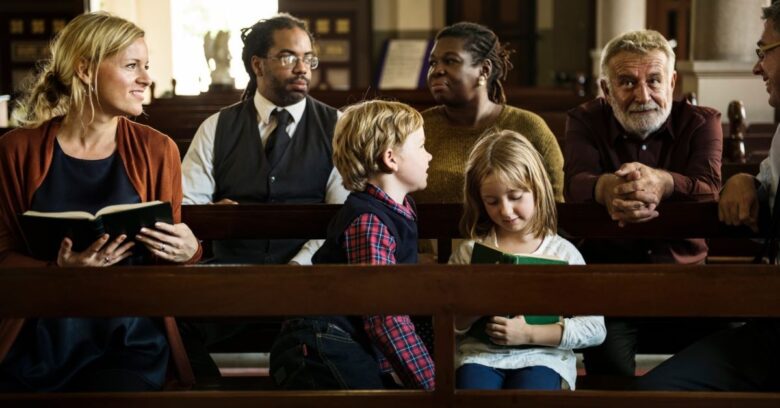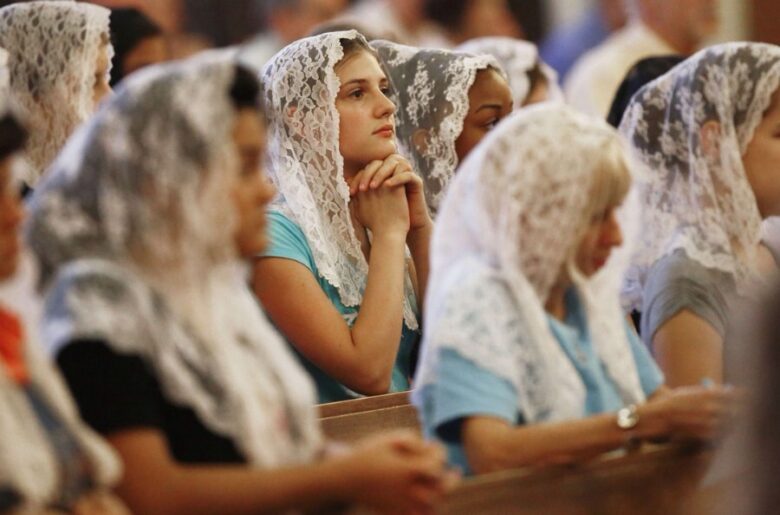In a world that constantly evolves in terms of fashion trends and styles, it’s essential to remember that certain settings demand a specific level of decorum and respect. One such setting is the church, where appropriate attire plays a significant role in demonstrating reverence and modesty. To navigate the realm of church fashion with grace, it’s important to understand the unspoken rules and etiquettes that govern this unique sartorial domain. In this blog post, we will explore the secrets of church fashion etiquette in 2024 and guide you toward dressing with elegance and respect for your spiritual community.
Contents
- Understanding the Basics
- Modesty and Elegance: Key Principles of Church Fashion
- Decoding Dress Codes: Differentiating Between Denominations
- Stylish and Sophisticated: Tips for Selecting Church-Appropriate Attire
- Accessorizing with Grace: Choosing the Right Accessories for Church
- Dressing for Special Occasions: Weddings, Funerals, and More
- Fashion Faux Pas to Avoid: Common Mistakes in Church Fashion
- Embracing Cultural Diversity: Incorporating Traditional Attire in Church
- Balancing Tradition and Personal Style
- Practical Tips for Maintaining Church Attire: Care and Preservation
- Conclusion
Understanding the Basics
When it comes to dressing for church, modesty should be the guiding principle. Choose clothing that covers the shoulders, chest, and knees. Avoid anything excessively revealing or tight-fitting. Opt for clean, well-pressed garments like suits from church suits that reflect your respect for the sacred space you’re entering.

Source: crosswalk.com
Modesty and Elegance: Key Principles of Church Fashion
Modesty and elegance are two fundamental principles to keep in mind when selecting your chapel attire. Avoid bright patterns or excessive embellishments. Try to choose clothes that are elegant and stylish. Opt for solid colors or subtle patterns that exude a sense of refinement and grace. Remember, it’s not about suppressing your personal style, but rather adapting it to the solemn atmosphere of the church.
Decoding Dress Codes: Differentiating Between Denominations
Various denominations may have specific dress codes or expectations for their church services. It’s crucial to familiarize yourself with the customs and traditions of your particular denomination. For instance, some chapels may require women to wear head coverings, while others may have guidelines regarding the wearing of jewelry or specific colors. By understanding and respecting these dress codes, you can ensure that your attire aligns with the traditions of your faith community.
Stylish and Sophisticated: Tips for Selecting Church-Appropriate Attire
Selecting church-appropriate attire doesn’t mean sacrificing style or personal expression. There are plenty of fashionable options that can still adhere to the principles of modesty and elegance. Choose well-tailored dresses, skirts, or pantsuits that flatter your figure without being overly revealing. Opt for high-quality fabrics that drape gracefully and elevate your overall look. Consider incorporating classic accessories, such as tasteful jewelry or a stylish hat, to add a touch of sophistication to your ensemble.

Source: churchhelper.net
Accessorizing with Grace: Choosing the Right Accessories for Church
Accessories can complement your outfit and enhance your overall appearance, but they should be chosen with care when attending church. Opt for minimalistic and understated pieces that don’t distract from the purpose of the service. Delicate necklaces, stud earrings, and simple bracelets are suitable choices. Avoid large, noisy accessories that may disrupt the tranquility of the worship space.
Dressing for Special Occasions: Weddings, Funerals, and More
Special church occasions like weddings and funerals call for a heightened sense of appropriateness and respect. For weddings, consider wearing attire that is both formal and elegant, avoiding white or flashy colors that may upstage the bride. When attending a funeral, opt for subdued colors like black, navy, or gray, as a sign of mourning and reverence. Respectful attire during these occasions demonstrates your sensitivity and support to those celebrating or mourning.
Fashion Faux Pas to Avoid: Common Mistakes in Church Fashion
While exploring chapel fashion, it’s important to address some common mistakes that can inadvertently undermine the atmosphere of reverence. Avoid wearing casual attire, such as jeans, shorts, or t-shirts, which are better suited for other social settings. Similarly, excessively revealing outfits, overly casual footwear, or loud and distracting accessories should be avoided. By steering clear of these fashion faux pas, you ensure that your appearance is in harmony with the sacred environment.

Source: liturgyguy.com
Embracing Cultural Diversity: Incorporating Traditional Attire in Church
The church is a melting pot of diverse cultures, and incorporating traditional attire can be a beautiful way to celebrate and honor these cultural backgrounds. If your faith community embraces cultural diversity, consider incorporating elements of traditional attire into your church fashion. This can be done through modestly adapting traditional clothing or accessories that hold significant meaning in your cultural heritage. By doing so, you demonstrate pride in your roots while respecting the customs and traditions of your faith community.
Balancing Tradition and Personal Style
Church fashion etiquette doesn’t mean disregarding contemporary trends. It’s about finding a balance between embracing current styles and adhering to the principles of modesty and respect. Stay informed about fashion trends and adapt them to suit the appropriate guidelines for church attire. Remember, your personal style can shine through even in the context of church fashion, as long as it aligns with the core principles of reverence and elegance.
Practical Tips for Maintaining Church Attire: Care and Preservation
After carefully selecting appropriate attire for church, it’s essential to take steps to maintain and preserve your garments. By practicing proper care, you can ensure that your church attire remains in good condition and continues to exude elegance and reverence. First, always follow the care instructions on clothing labels, whether it’s handwashing, dry cleaning, or using specific detergents. Proper storage is also crucial, as hanging or folding your garments neatly can prevent wrinkles and damage. Additionally, be mindful of accessories that may snag or tear delicate fabrics. By implementing these practical tips, you can extend the lifespan of your church attire and maintain its polished appearance for future worship services.

Source: churchhelper.net
Conclusion
Dressing with grace and etiquette is an important part of the Christian faith. By taking into consideration the key points discussed in this article, you can ensure that your attire is appropriate for church events and other religious occasions. Be sure to consider all aspects of the dress code, from length and coverage to colors and accessories when selecting what to wear. Ultimately, it’s always best to err on the side of modesty no matter where you are attending church or any other spiritual event as dressing modestly shows respect for God and Christianity itself.
